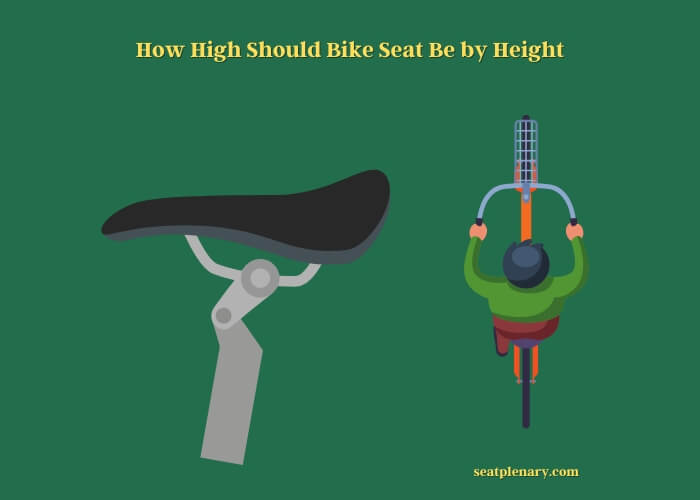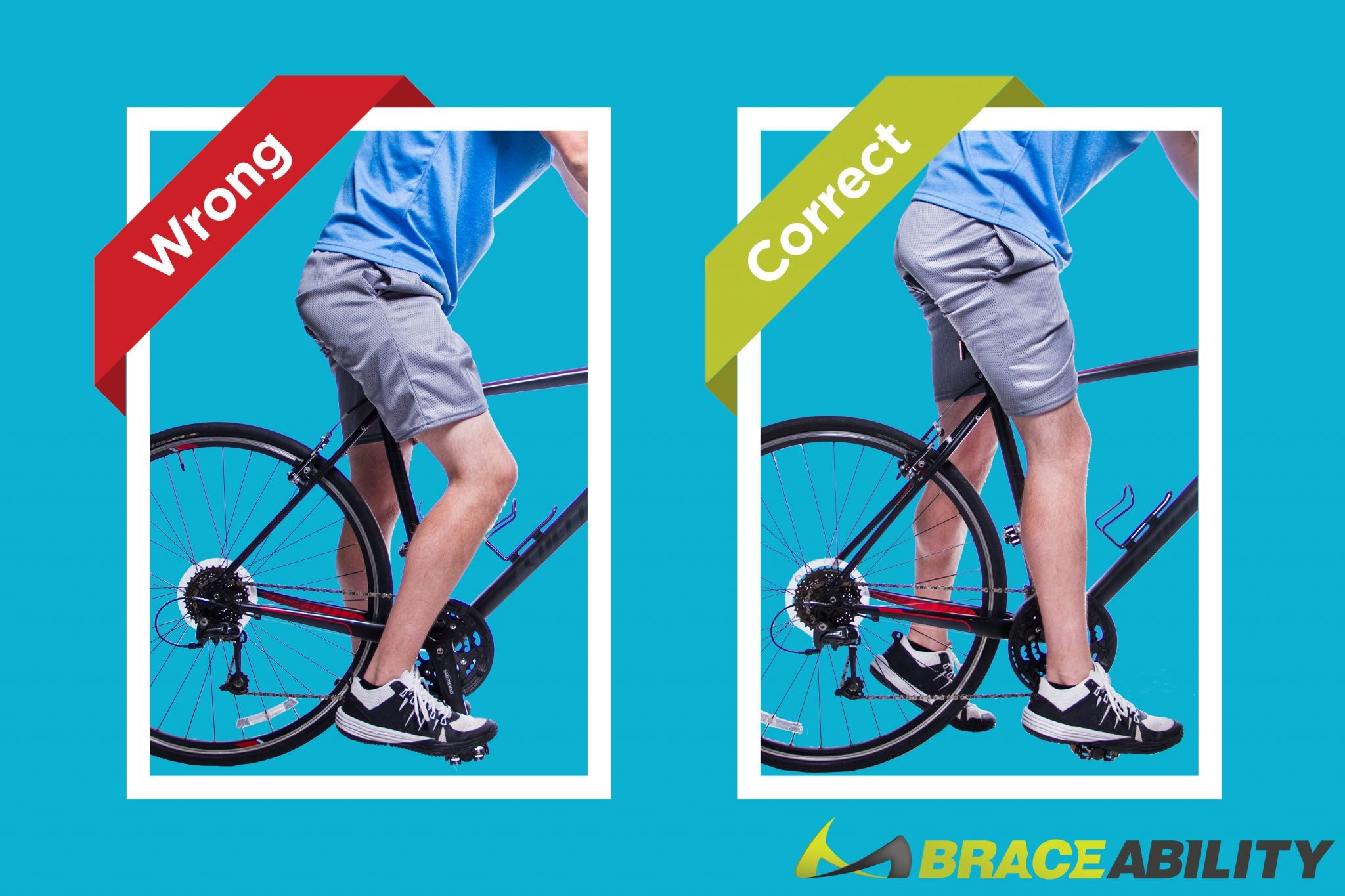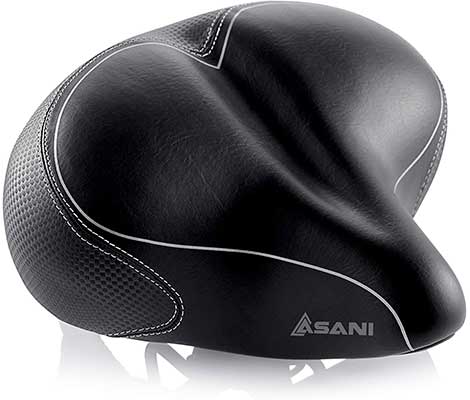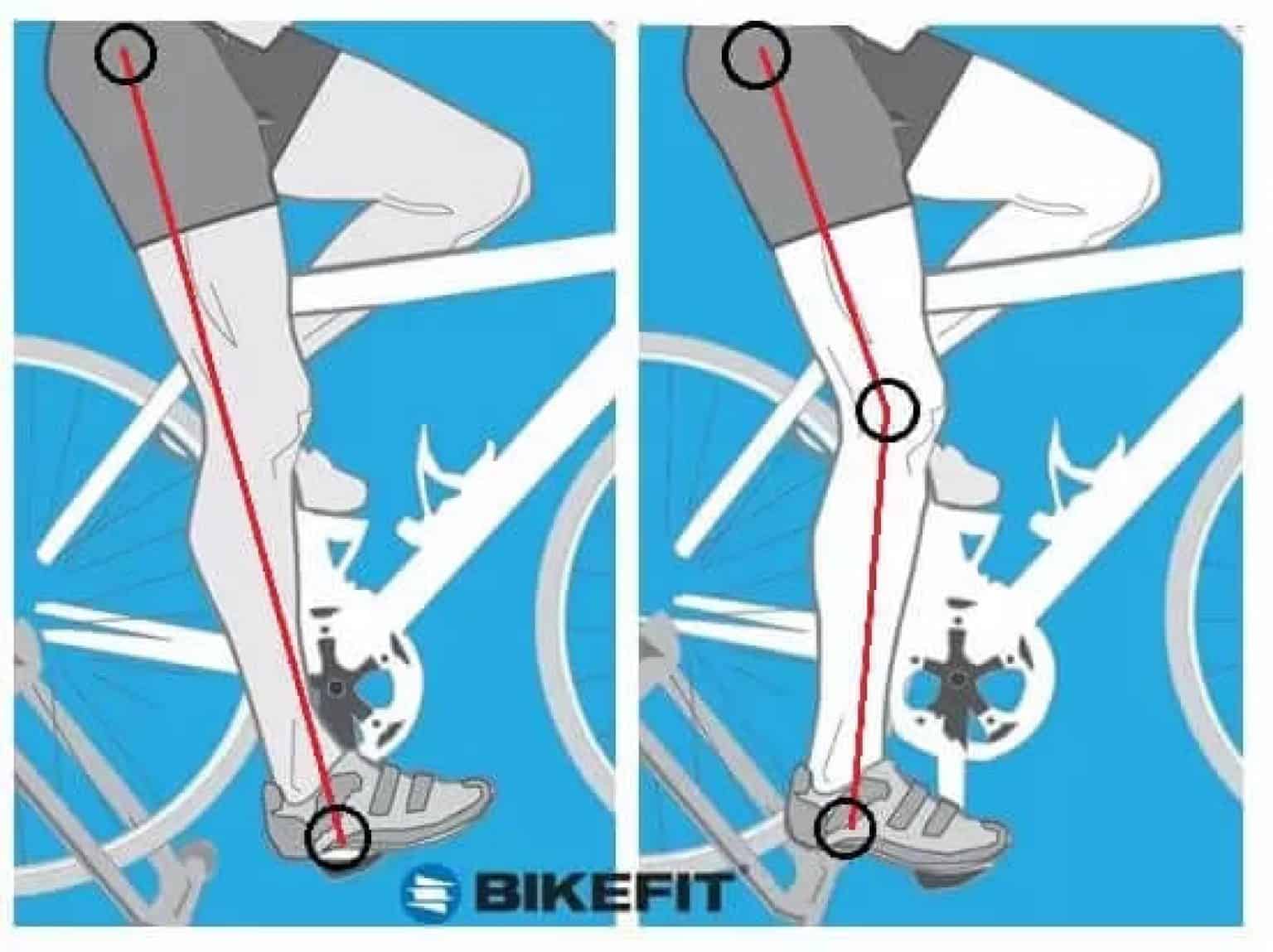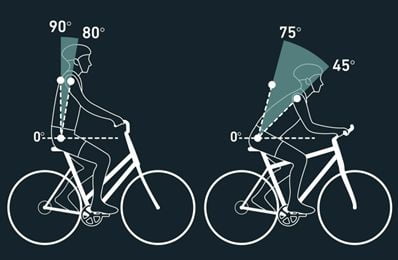Why Proper Bike Seat Height Matters for Comfort and Performance
Proper bike seat height is crucial for a comfortable and efficient ride. When the seat is adjusted to the correct height, it allows for optimal pedaling efficiency, reduces strain on the knees and back, and enhances overall cycling experience. A well-adjusted bike seat can also help prevent injuries, such as knee pain and numbness in the hands and feet. On the other hand, a seat that is too high or too low can lead to discomfort, fatigue, and decreased performance.
One of the primary reasons why proper bike seat height is essential is that it allows for efficient energy transfer. When the seat is at the correct height, the rider’s legs are able to pedal in a smooth, circular motion, which enables the muscles to work efficiently. This, in turn, reduces fatigue and allows the rider to maintain a consistent pace. Additionally, a properly adjusted bike seat helps to maintain a neutral spine, which reduces strain on the neck and shoulders.
Furthermore, proper bike seat height is also important for injury prevention. When the seat is too high, it can cause the rider to overstretch, leading to strain on the knees and back. On the other hand, a seat that is too low can cause the rider to hunch over, leading to strain on the neck and shoulders. By adjusting the bike seat to the correct height, riders can reduce their risk of injury and enjoy a more comfortable ride.
So, how do you determine the correct bike seat height? The answer lies in finding a balance between comfort and performance. A good starting point is to adjust the seat so that the leg is almost fully extended when the pedal is in its lowest position. This will allow for efficient energy transfer and reduce strain on the knees and back. However, the ideal bike seat height will vary depending on the individual rider’s needs and preferences.
For example, riders who prioritize comfort may prefer a slightly lower seat height, while those who prioritize performance may prefer a slightly higher seat height. Ultimately, the key is to experiment and find the perfect balance between comfort and performance. By doing so, riders can enjoy a more efficient, comfortable, and enjoyable ride.
How to Determine Your Ideal Bike Seat Height: A Step-by-Step Guide
Determining the ideal bike seat height is a crucial step in achieving a comfortable and efficient ride. To help you find the perfect height, follow these steps:
Step 1: Measure Your Inseam
Start by measuring your inseam, which is the distance from the floor to the top of your inner thigh. This measurement will give you a baseline for determining your ideal bike seat height. To measure your inseam, stand against a wall with your feet shoulder-width apart and your back straight. Place a book or a ruler between your legs, with the spine of the book or the edge of the ruler pressed against the wall. Measure the distance from the floor to the top of the book or ruler.
Step 2: Use a Bike Fit Calculator
Once you have your inseam measurement, you can use a bike fit calculator to determine your ideal bike seat height. A bike fit calculator takes into account your inseam, as well as other factors such as your height, weight, and riding style. You can find bike fit calculators online or at your local bike shop.
Step 3: Consider Your Riding Style and Terrain
Your riding style and terrain can also affect your ideal bike seat height. For example, if you’re a road cyclist, you may prefer a slightly higher seat height to allow for more efficient pedaling. On the other hand, if you’re a mountain biker, you may prefer a slightly lower seat height to allow for more control and maneuverability.
Step 4: Experiment and Adjust
Once you have a baseline for your ideal bike seat height, it’s time to experiment and adjust. Start by setting your bike seat height to the recommended height based on your inseam and riding style. Then, take your bike for a spin and pay attention to how you feel. If you feel uncomfortable or experience pain in your knees or back, adjust the seat height accordingly.
Additional Tips:
When adjusting your bike seat height, make sure to also adjust the handlebar height to maintain a comfortable riding position. Additionally, consider using a bike fit expert or taking a bike fit class to help you find your ideal bike seat height.
By following these steps and considering your individual needs and preferences, you can find your ideal bike seat height and enjoy a more comfortable and efficient ride.
Understanding Bike Seat Height and Its Relationship with Handlebar Height
When it comes to finding the perfect riding position, bike seat height and handlebar height are two crucial components that work together to provide a comfortable and efficient ride. Understanding the relationship between these two components is essential for achieving optimal performance and minimizing the risk of injury.
The ideal bike seat height is one that allows for a slight bend in the knee when the pedal is in its lowest position. This position enables the rider to maintain a neutral spine and avoid excessive strain on the neck and shoulders. However, the handlebar height also plays a critical role in achieving this position.
A handlebar that is too high or too low can disrupt the rider’s posture and cause discomfort. A handlebar that is too high can cause the rider to lean forward, putting strain on the neck and shoulders. On the other hand, a handlebar that is too low can cause the rider to hunch over, putting strain on the back and shoulders.
To achieve a comfortable riding position, the handlebar height should be adjusted to allow for a slight bend in the elbows when the hands are on the handlebars. This position enables the rider to maintain a neutral spine and avoid excessive strain on the neck and shoulders.
When adjusting the bike seat height and handlebar height, it’s essential to consider the rider’s individual needs and preferences. For example, a rider with a longer torso may require a higher handlebar to maintain a comfortable riding position. On the other hand, a rider with a shorter torso may require a lower handlebar.
Additionally, the type of riding being done can also affect the ideal bike seat height and handlebar height. For example, a road cyclist may prefer a slightly higher handlebar to allow for more efficient pedaling. On the other hand, a mountain biker may prefer a slightly lower handlebar to allow for more control and maneuverability.
By understanding the relationship between bike seat height and handlebar height, riders can achieve a comfortable and efficient riding position that minimizes the risk of injury and maximizes performance.
Some key takeaways to keep in mind when adjusting bike seat height and handlebar height include:
– Maintain a neutral spine to avoid excessive strain on the neck and shoulders.
– Adjust the handlebar height to allow for a slight bend in the elbows when the hands are on the handlebars.
– Consider individual factors such as torso length and riding style when adjusting bike seat height and handlebar height.
– Experiment with different adjustments to find the perfect riding position.
Common Mistakes to Avoid When Adjusting Your Bike Seat Height
When adjusting your bike seat height, there are several common mistakes to avoid in order to ensure a comfortable and efficient ride. By being aware of these mistakes, you can take steps to prevent them and find the perfect riding position.
Mistake #1: Setting the Seat Too High
Setting the seat too high is one of the most common mistakes cyclists make when adjusting their bike seat height. When the seat is too high, it can cause the rider to overstretch, leading to discomfort and strain on the knees and back. To avoid this mistake, make sure to adjust the seat height so that the leg is almost fully extended when the pedal is in its lowest position.
Mistake #2: Setting the Seat Too Low
On the other hand, setting the seat too low can also cause discomfort and inefficiency. When the seat is too low, it can cause the rider to hunch over, leading to strain on the back and shoulders. To avoid this mistake, make sure to adjust the seat height so that the rider can maintain a neutral spine and avoid excessive strain on the neck and shoulders.
Mistake #3: Neglecting to Consider Individual Factors
Another common mistake cyclists make when adjusting their bike seat height is neglecting to consider individual factors such as leg length and flexibility. For example, a rider with longer legs may require a higher seat height to maintain a comfortable riding position. On the other hand, a rider with shorter legs may require a lower seat height. By taking these individual factors into account, you can find the perfect riding position and avoid discomfort and inefficiency.
Mistake #4: Not Adjusting the Handlebar Height
Finally, another common mistake cyclists make when adjusting their bike seat height is not adjusting the handlebar height. The handlebar height and bike seat height are closely related, and adjusting one without adjusting the other can cause discomfort and inefficiency. By adjusting both the bike seat height and handlebar height, you can find the perfect riding position and enjoy a comfortable and efficient ride.
By avoiding these common mistakes, you can find the perfect riding position and enjoy a comfortable and efficient ride. Remember to always adjust your bike seat height with caution and to consider individual factors such as leg length and flexibility. With a little practice and patience, you can find the perfect riding position and take your cycling to the next level.
Product Review: Top Bike Seats for Comfort and Performance
When it comes to finding the perfect bike seat, there are many options available on the market. In this review, we’ll take a look at some of the top bike seats for comfort and performance, including products from brands such as Brooks, WTB, and Terry.
Brooks B17 Saddle
The Brooks B17 saddle is a classic choice for comfort and performance. Made from high-quality leather, this saddle is designed to provide a comfortable ride for long distances. The B17 features a cutout design to reduce pressure on the perineum, and a suspension system to absorb vibrations from the road.
WTB Volt Saddle
The WTB Volt saddle is a popular choice among mountain bikers and road cyclists alike. This saddle features a unique design with a cutout in the center to reduce pressure on the perineum. The Volt also features a gel insert to provide extra comfort and support.
Terry Butterfly Saddle
The Terry Butterfly saddle is a great choice for women who are looking for a comfortable and supportive saddle. This saddle features a unique design with a cutout in the center to reduce pressure on the perineum, and a gel insert to provide extra comfort and support.
Other notable mentions include the Selle Royal Respiro saddle, which features a unique design with a cutout in the center to reduce pressure on the perineum, and the Fizik Arione saddle, which features a sleek and aerodynamic design.
When choosing a bike seat, there are several factors to consider. First and foremost, you’ll want to consider the type of riding you’ll be doing most often. If you’re a road cyclist, you’ll want a saddle that is designed for speed and efficiency. If you’re a mountain biker, you’ll want a saddle that is designed for comfort and support.
You’ll also want to consider the material of the saddle. Leather saddles are a popular choice among cyclists, as they provide a comfortable and supportive ride. However, they can be heavy and may require a break-in period. Synthetic saddles, on the other hand, are lightweight and easy to clean, but may not provide the same level of comfort and support as a leather saddle.
Finally, you’ll want to consider the price of the saddle. Bike seats can range in price from under $50 to over $200, depending on the brand and quality of the saddle. While it may be tempting to go for the cheapest option, keep in mind that a high-quality saddle can make a big difference in your comfort and performance on the bike.
Expert Tips for Fine-Tuning Your Bike Seat Height
Once you’ve determined your ideal bike seat height, there are several expert tips you can use to fine-tune your position and achieve optimal comfort and performance. Here are a few tips to consider:
Adjust the Seat Angle
The seat angle is a critical component of your bike seat height. A seat that is too far forward or backward can cause discomfort and inefficiency. To adjust the seat angle, start by loosening the seatpost clamp and then tilting the seat forward or backward until you find a comfortable position. Make sure to tighten the clamp securely once you’ve found the right angle.
Use Shims or Spacers
If you’re finding that your bike seat is too high or too low, you can use shims or spacers to adjust the height. Shims are thin pieces of material that can be placed between the seatpost and the frame to raise or lower the seat. Spacers are similar, but are typically used to adjust the height of the handlebars. By using shims or spacers, you can make fine adjustments to your bike seat height and achieve optimal comfort and performance.
Experiment with Different Saddle Shapes and Sizes
Not all saddles are created equal. Different saddle shapes and sizes can affect the comfort and performance of your ride. If you’re finding that your current saddle is uncomfortable or inefficient, consider trying a different shape or size. You may find that a saddle with a cutout or a gel insert provides more comfort and support than your current saddle.
Consider a Bike Fit Professional
If you’re still having trouble finding a comfortable and efficient riding position, consider consulting a bike fit professional. A bike fit professional can help you determine your ideal bike seat height and make adjustments to your bike to achieve optimal comfort and performance. They can also provide guidance on how to maintain your bike seat height over time and make adjustments as needed.
Monitor Your Body Position
Finally, it’s essential to monitor your body position when riding your bike. Pay attention to how your body feels and make adjustments to your bike seat height as needed. If you’re feeling discomfort or pain in your knees, back, or neck, it may be a sign that your bike seat height is not optimal. By monitoring your body position and making adjustments as needed, you can achieve optimal comfort and performance on your bike.
How to Maintain Proper Bike Seat Height Over Time
Once you’ve found your ideal bike seat height, it’s essential to maintain it over time to ensure continued comfort and performance. Here are some tips on how to monitor changes in body position and make adjustments as needed:
Regularly Check Your Bike Seat Height
It’s essential to regularly check your bike seat height to ensure it remains at the optimal level. You can do this by performing a simple test: sit on your bike with your feet flat on the ground and your hands on the handlebars. If your leg is almost fully extended when the pedal is in its lowest position, your bike seat height is likely correct.
Monitor Changes in Body Position
As you ride your bike, pay attention to any changes in your body position. If you notice that you’re leaning forward or backward, or if you’re experiencing discomfort or pain in your knees, back, or neck, it may be a sign that your bike seat height needs to be adjusted.
Make Adjustments as Needed
If you notice any changes in your body position or experience discomfort or pain, make adjustments to your bike seat height as needed. You can use the tips provided in this article to adjust your bike seat height and maintain optimal comfort and performance.
Consider a Bike Fit Professional
If you’re unsure about how to maintain your bike seat height or if you’re experiencing persistent discomfort or pain, consider consulting a bike fit professional. A bike fit professional can help you determine the optimal bike seat height for your body and provide guidance on how to maintain it over time.
Keep in Mind That Bike Seat Height Can Change Over Time
It’s essential to keep in mind that bike seat height can change over time due to various factors, such as changes in body position, riding style, or terrain. Regularly checking and adjusting your bike seat height can help ensure that you maintain optimal comfort and performance.
By following these tips, you can maintain proper bike seat height over time and enjoy a comfortable and efficient ride.
Conclusion: Finding Your Perfect Riding Position for a Comfortable and Efficient Ride
Proper bike seat height is essential for a comfortable and efficient ride. By following the tips and guidelines outlined in this article, you can find your perfect riding position and enjoy a more enjoyable and productive cycling experience.
Remember, the key to finding your perfect riding position is to experiment and make adjustments as needed. Don’t be afraid to try different bike seat heights, handlebar heights, and saddle shapes and sizes until you find what works best for you.
Additionally, consider consulting a bike fit professional if you’re unsure about how to adjust your bike seat height or if you’re experiencing persistent discomfort or pain. They can provide personalized guidance and help you find your perfect riding position.
By taking the time to find your perfect riding position, you can improve your pedaling efficiency, reduce strain on your knees and back, and enhance your overall cycling experience. So why wait? Start experimenting with different bike seat heights and handlebar heights today and find your perfect riding position for a comfortable and efficient ride.
In conclusion, proper bike seat height is crucial for a comfortable and efficient ride. By following the tips and guidelines outlined in this article, you can find your perfect riding position and enjoy a more enjoyable and productive cycling experience. Happy cycling!


